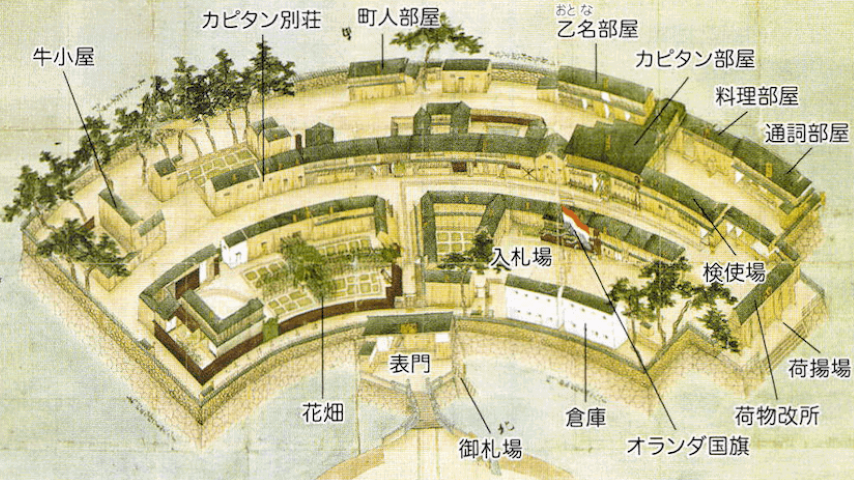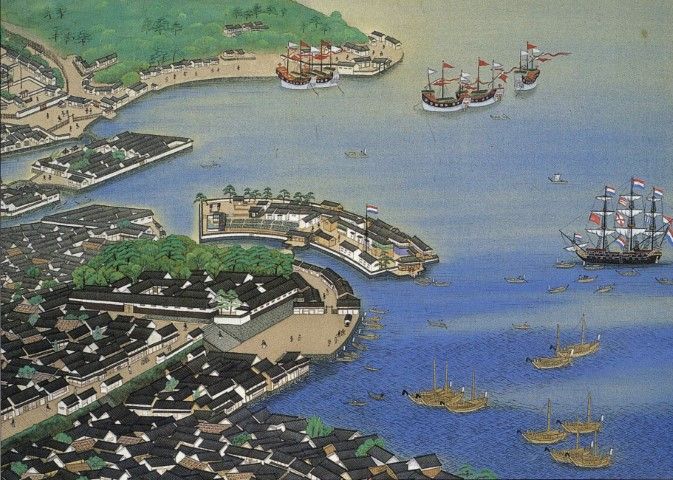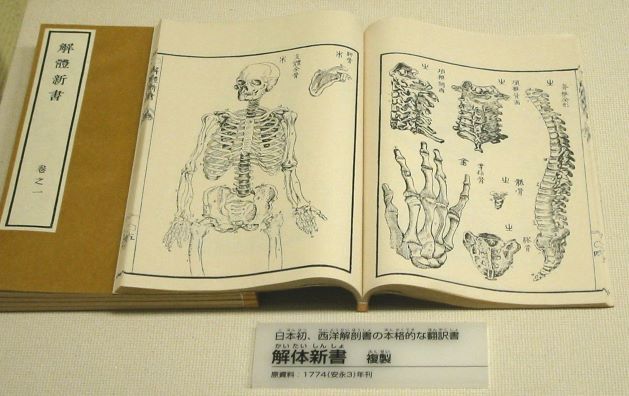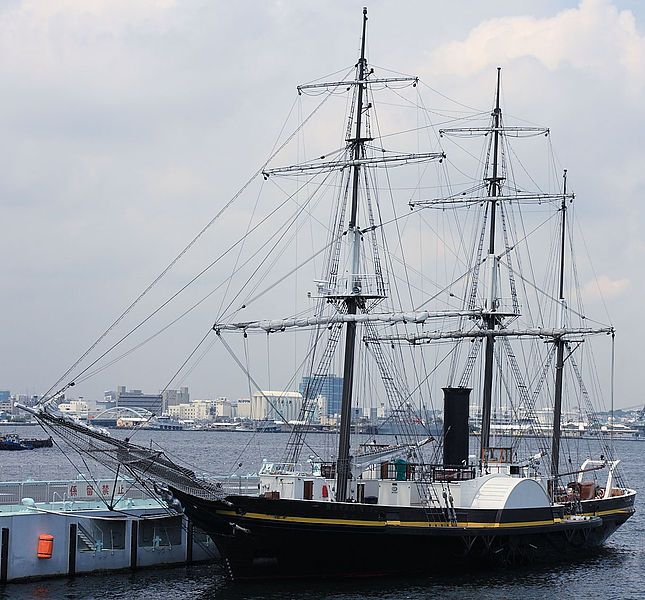
扎根日本的閒者,披露日本的不同面向,深入認識更真實的日本。 ( ^_^)/~~~ My blog https://motonojp.com/
Japanese's first foreign language is English, before English?
The outbreak of the Industrial Revolution allowed the British Empire to embark on a global expedition. Puritans who fled England, established the United States on the American continent until they became world hegemons. The two empires spread the influence of their native languages around the world, even allowing contemporary China to change the shape of the alphabet. Almost all non-native English-speaking countries default to English as their first foreign language to learn, and Japan is of course no exception. Just before the strong rise of English, what was the first foreign language in Japan, do readers and friends know?
Friends who answered "Chinese", your history is very good! (applaud)
That's right, learning Chinese (called Sinology in Japan) was once the first foreign language that all Japanese intellectuals had to learn. If the scholars at that time did not understand Chinese, they would be embarrassed to sing poetry against their friends. I don't know Chinese, and I can't even record the history of my own country. Because in ancient Japan, there were no characters at all, and later, Chinese characters were used to create Japanese pseudonyms . As the name suggests, pseudonyms are characters borrowed from Chinese.
It is a pity that since the late Ming and early Qing dynasties, China has become self-sufficient and does not want to make progress, and it will no longer be brilliant. The Japanese object of study naturally moved to the more powerful Western countries!
Portugal and Spain, who first came to Japan, were strong in that era, but for various reasons, the Japanese were unable to yearn for them. By fate, a certain Western country quietly entered Japan.
Which country is it? Let’s start from the beginning. Let’s start with the matter of seclusion and isolation. I believe everyone understands the meaning of these four words. Not only did the Qing Dynasty do this, but the Japanese also did it. Japan drove Westerners out of Japan roughly at the beginning of the Edo Shogunate period (early 17th century), and prohibited the Japanese from crossing the sea to go abroad. Those who had been out for a period of time were regarded as traitors, and they were not allowed to come back. They were executed if they dared to come back.
The reason why Japan is closed to the country is related to religion. As early as the Warring States Period (about 1500) in Japan, there were Western missionaries who came to Japan across the oceans, and they also brought goods to do business in addition to their mission. The matchlock was brought into Japan by the Portuguese at that time. When he met Oda Nobunaga , a man who was easy to accept new things, he bought a large number of artillery weapons, which were actually used on the battlefield. If it weren't for the Honnoji incident, the history of Japan would have changed. In the late Warring States period, there was even a daimyo (a daimyo similar to a Chinese prince) who was baptized as a Catholic, and was called the daimyo of Gili Zhidan (キリシタン Portuguese Catholic). It is hard to say whether they are religious or not, but it is a fact that they can buy Western artillery ammunition more smoothly.
When the war ended and entered the peaceful Edo shogunate era, those in power no longer needed to buy weapons, and focused on the stability of the regime. Catholicism is different from Shinto and Buddhism in Japan, and advocates equality before God. In the Edo period, it was still in a feudal society, and the peasant and industrial and commercial classes were solidified. If everyone was equal, it would be a mess. Toyotomi Hideyoshi began to prohibit Westerners from preaching, and after the opening of the Edo shogunate, the Edo shogunate also issued several prohibition orders. It was roughly in 1639 that Portuguese ships were prohibited from coming to Japan. Basically, Western missionaries at this time have disappeared in Japan. However, despite this, the Japanese wisely left the back door and left the Chinese and Dutch business offices in "Dejima" in Nagasaki. It is not difficult to understand that there is a business relationship with China. Why would the Netherlands be allowed to stay and do business?


The reason is that although the Netherlands is also a Christian country, it believes in Protestantism with relatively less strict teachings. Moreover, the Dutch paid more attention to business. The famous Dutch East India Company was established by the Dutch. For the benefit of trade, they assured the Edo Shogunate that they would not preach or develop believers. Unlike Portugal, Spain is a strict Catholic Church (also known as Roman Catholicism). The Edo shogunate also needed to have access to the latest information from the Western world, so the two sides hit it off, and the Netherlands played this role. The voyage log originally written by the Dutch captain gradually increased into "Dutch style storytelling" ( wind storytelling is an intelligence book. There are also Tang ship style storytelling .), which is handed over to the Edo shogunate by the Dutch business director every year. This measure continued. Over 200 years (1641‐1859). It is said that the American Perry 's intention to drive a black ship to Japan was recorded in the Dutch wind story a year before his arrival and delivered to the shogunate.
Communication with the Dutch, including translating "Dutch-style storytelling" and bringing Western books through the Dutch are all for the purpose of understanding all kinds of knowledge in the Western world. For this reason, a large number of Dutch-speaking talents must be prepared. Japanese scholars began to learn Dutch under the order of the shogun and became their first foreign language. Since then, Japan has begun to edit Japanese-Dutch dictionaries, and began to translate science and technology such as medical books, astronomy, physics, chemistry, surveying and mapping from the West. books. These learnings are also called "Lan Xue" (not difficult to learn XD), and in the later period, the knowledge of other Western countries was added, and it was renamed "Western Learning".
Japan's first human anatomy medical book translated from Dutch, "The New Book of Disintegration" (the original German doctor J. Kulmus) was published by Sugita Genbai in 1774. Due to Sugita's lack of Dutch knowledge, there are many puzzles. Therefore, he ordered his disciple Otsuki Genzawa to comprehensively re-examine all the translations of the book, and after revising the errors and deficiencies in the original book, he republished the "New Book of Revision and Disintegration" in 1826. Many anatomical standard terms in Chinese and Japanese today, such as the names of human organs such as "nerve", "cartilage", "artery", "hymen", etc., are all from this book, which shows its importance.

Sugita Xuanbai was born in a family of doctors. He studied family medicine since he was a child. He also studied under the imperial physician Xi Xuanzhe, and was also proficient in Sinology. In 1752, he became the imperial physician of the lord of the Ohama Domain (located in Fukui Prefecture). Five years later, he went to Nihonbashi, Edo, to start his own business. It was also in this year that he began to associate with friends who were proficient in orchidology.
In 1771, Sugita visited the human anatomy of executed prisoners with his companions, and witnessed the correctness of the Western medical books on human anatomy. Since he himself is not proficient in Dutch, he asked a friend to translate it, and he corrected the manuscript, but their work was extremely hard, because there was no corresponding Japanese vocabulary in Japan at that time. In his memoirs in his later years, he wrote that the translation work at that time was like taking a boat without oars and rudders and being thrown into the sea alone, which was no different from cracking a code, and the degree of difficulty was evident.
Although Japan, like the Qing Dynasty, was closed to the country, until 1854, when American Perry drove a black ship to force Japan to open a country , Japanese intellectuals were no strangers to Western technology. reform.
When Japan decided to build a modern naval fleet, the Dutch government, in order to compete with other Western countries, won the favor of Japan, and in 1855, King William III of the Netherlands presented Japan's first steam battleship " Kanko Maru ". The origin of the name is taken from the Chinese Book of Changes, "The Light of Viewing the Country".

It has now become a loanword of Japanese, although most of them are from English, but some are actually from Dutch.
- オルゴール=orgel=music box
- カバン=kabas=bag
- kokk=kok=chef
- ゴム=gom=rubber
- コルク=kurk=cork stopper
- シロップ=siroop=syrup
- ピンセット=pincet=tweezers
- メス=mes=scalpel
- ランドセル=ransel= Japanese schoolbags for elementary school students
Because English, Dutch, and German belong to the West Germanic branch of the Indo-European language family, and their vocabulary is very similar to each other, many people think that they are foreign languages from English. In fact, some of them are Dutch, which was passed down earlier than English. Enter Japan to become Japanese.
For example, Japanese ギプス, which is fixed with plaster, may be thought by many people to come from English gypsum . If they know that it comes from Dutch gips , it will be easier to understand why Japanese is written as ギプス. (I wrote this myself to know that the word comes from Dutch XD)
You can see "Fukuzawa Yukichi" when you take out a Japanese 10,000 yuan bill. He is a modern Japanese enlightenment thinker, educator (who founded Keio University), and a scholar of orchidology. In 1859, he came to Yokohama , which had recently become a place of residence for foreigners due to the "Japan-US trade treaty". He originally wanted to try his hard-earned Dutch to see if he could communicate with foreigners here. It turned out that he couldn't understand the advertising slogans on the streets, and he couldn't help but sigh that the era of Dutch is over. (Note: The Ministry of Finance of Japan expects to abdicate Fukuzawa and the others in 2024 and change them to Shibusawa Eiichi and others.)
The once Japanese first foreign language "Dutch" has been maintained for more than 200 years, and finally lost its status under the globalization of English.
2021/06/17 posted.
Original link to Japan behind-the-scenes observation
Like my work?
Don't forget to support or like, so I know you are with me..
Comment…